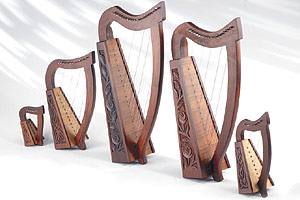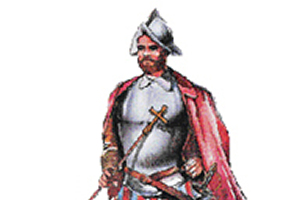For much time it was doubted whether the different Celtic peoples held common ideas that would allow it to be claimed that they possessed a common cultural identity. This was basically because this civilisation did not leave any written records of their beliefs, epics and history due to their not trusting in writing, as they believed this would destroy the living spirit of knowledge.
Nevertheless, because of the introduction of Latin in the Celtic nations, Celtic oral traditions were compiled. Likewise, as a result of different archeological discoveries it has been possible to partially reconstruct their art and belief system, which reflect the fertile imagination of this people.
In art they expressed their own ideas, that is, artistic expression was made more for themselves than for the gods, since creativity was thought of as something visionary and magical.
As far as religion went, this was vital to the cultural unity of the Celtic people, in which the druids or Celtic priests played a fundamental role.
Masters of Metal
In art the Celts were great craftspeople, working mainly with bronze and gold. The latter was combined with ivory, precious stones, amber and coral. Paint was applied to ceramic pieces and sculpture evolved only in the 3rd Century B.C, influenced by Mediterranean trends.
In the Halsttat culture geometrical elements dominated decorative art and the main themes were boats, wheels, and images of birds. Ornamentation was very elaborate and techniques such as articulation of metal pieces were discovered.
During the La Tène culture they began to replace symmetry with curved and interlinked motifs. Later, in the 4th Century B.C. the style became freer, deforming reality and creating drawings of animals with human faces. This method gave the Celts’ the most effective way to express their worldview.
After the Roman conquest a style arose which some scholars have named baroque. Although this style did not last long in Gaul, it did in the British Isles, where it served as the base of mediaeval Irish art, for example in decorated codices and in stone crosses ornamented by sculptures.
Varied Literature
Christianity brought literature to Ireland, where Celtic culture remained dominant. In this way it was possible to put down the primitive oral tales in writing. The oldest texts were written in the Gaelic language and one of them is the «Lebor na h’Uidre» (The Book of the Dun Cow), also named the Book of Ulster, written in the 12th Century. Another important compilation is the «Dean of Lismore’s Book» which narrates the cultural nexus between the Irish and Welsh Celts. Its style mixes history, magic and legend, with great descriptive ability and flexibility.
Irish poets or filid and the Scottish and Welsh bards kept Celtic poetry alive together with its rigorous and complicated metrics, despite the strong English presence, persecution and lack of status until the 12th and 13th centuries respectively.
Nevertheless, the magic and fantasy of Celtic literature was spread through Europe by means of the Arthurian Legends, about King Arthur and served as the base for the works of many later authors.
Everlasting Music
A well known and current reference for Celtic culture is its music, which embraces genres as diverse as this civilisation’s traditional folk music, originating in Western Europe, as well as the Celtic music played today which adopts some rhythmic elements of the former. Irish and Scottish melodies are considered to be the most authentic. The songs are generally interpreted in free time and singers add their own elements to enrich the melody. The main sources for inspiration are old tales and legends.
Some traditional instruments used for this type of music are the pipes, the harp, the violin, the bodhran (Irish drum) and the flute, among others.
Mystical Beliefs
Celtic religion was mainly animist, based on the belief that nature was something with a life of its own. They revered sacred animals such as the boar, the bear and the horse. Originally worship took place in forests. The main celebrations were Samhain at the beginning of November and Beltane on the 1st of May. Over 400 gods have been found in the Celtic pantheon. Among the most important were Lugus, the God-King, a wise wizard who was sovereign of the Druids; Dagda, lord of storms and the elements, god of friendship and of life and death, and Ogmios, god of war.
In any case, the deities’ realms were not limited to the areas over which each ruled as Celts perceived reality as in permanent change, due to the uninterrupted contact between the physical and the spiritual worlds.
Druids were the intellectual and priestly cast par excellence. They were poets and wise men and knew all literary, judicial and historic knowledge by memory. They dispensed justice, as well as being educators and practitioners of divination and magic and making sacrifices, on occasion even human ones.








